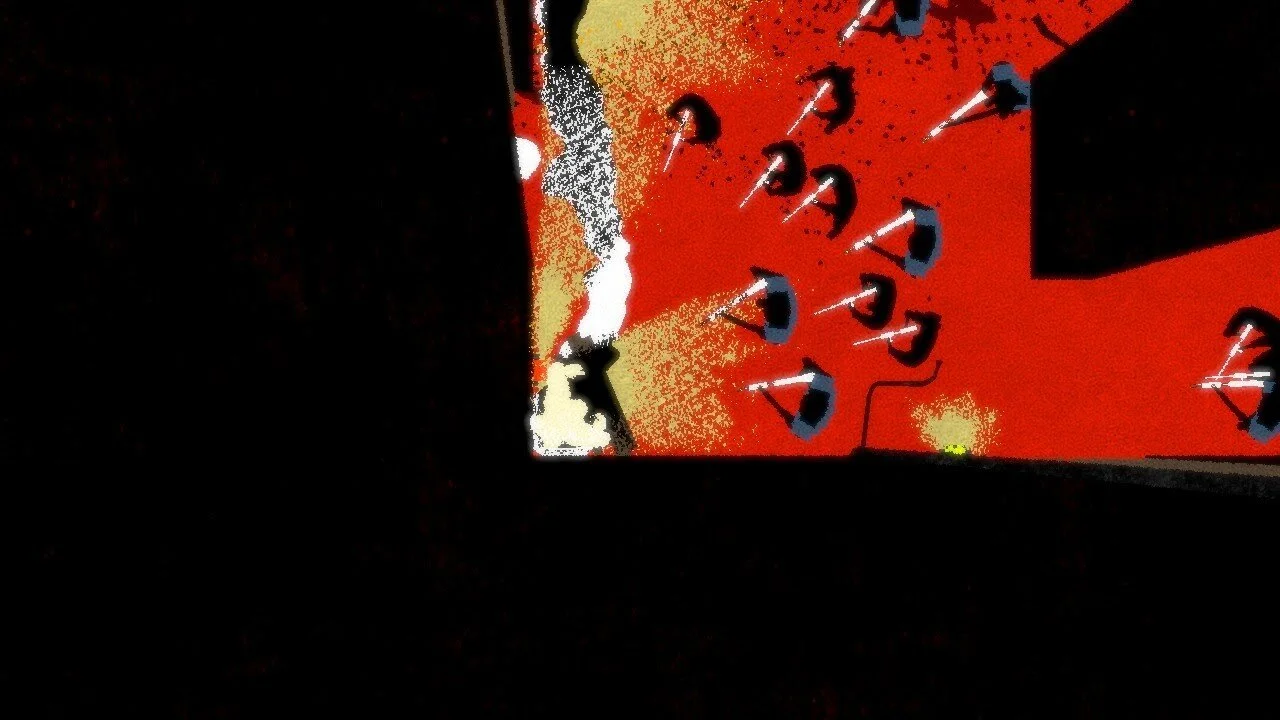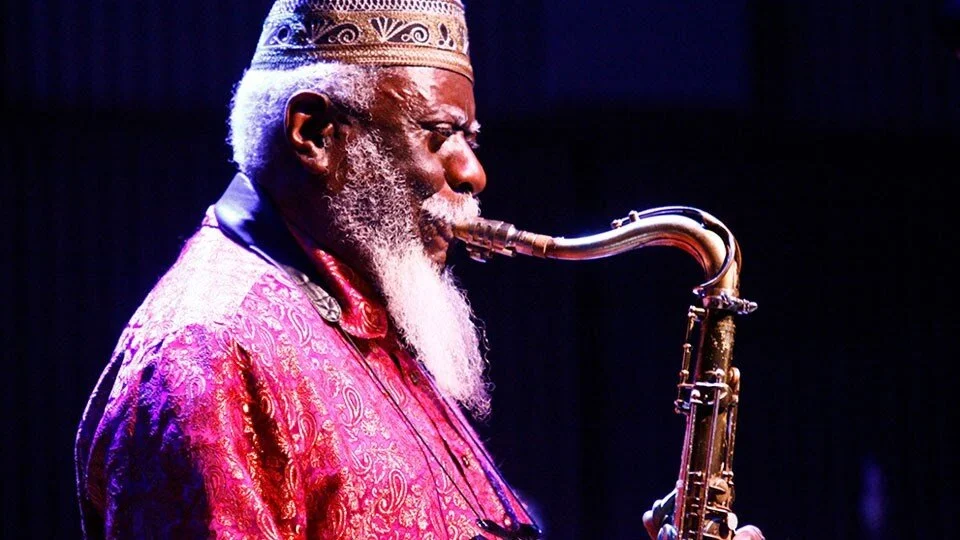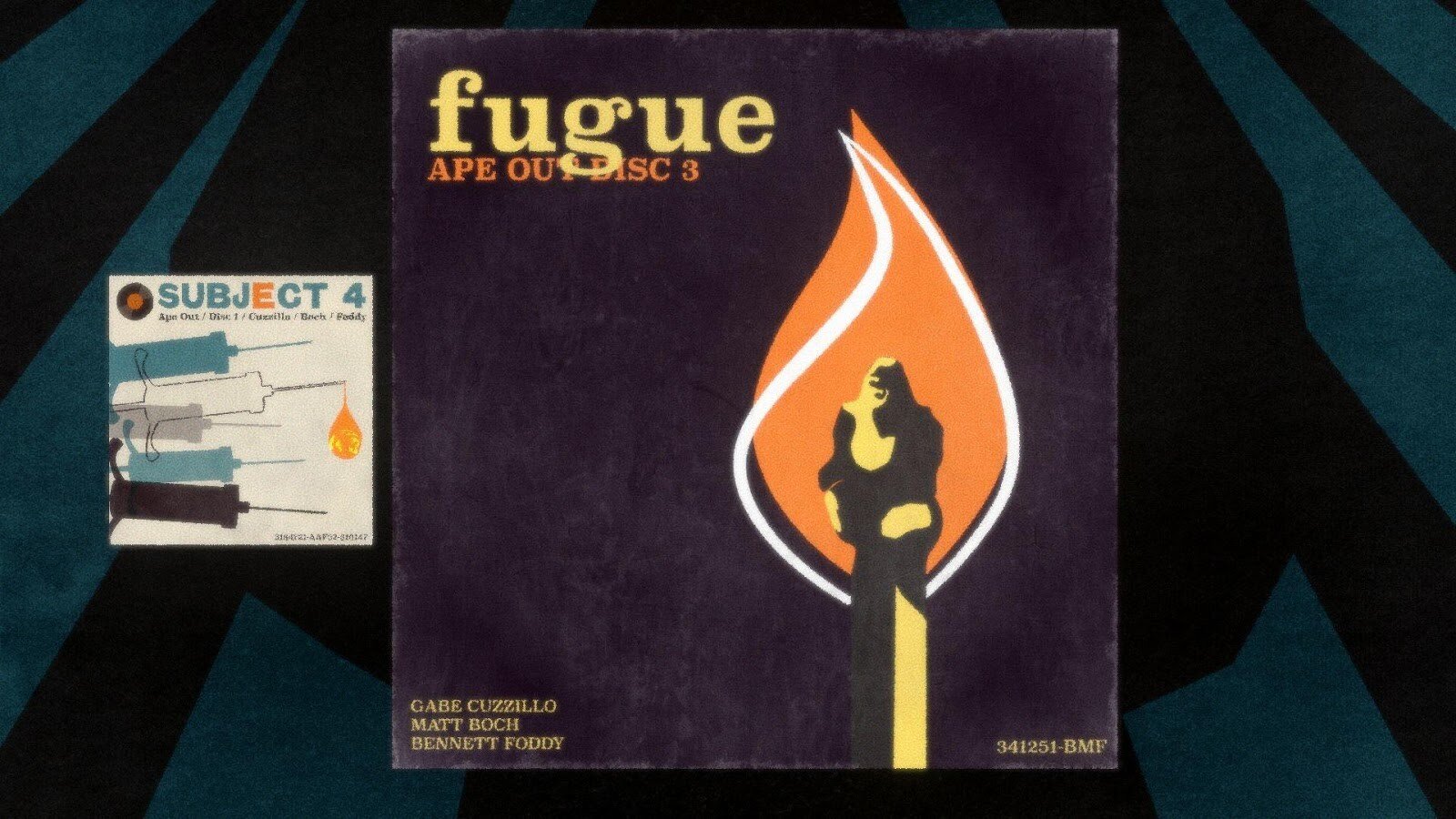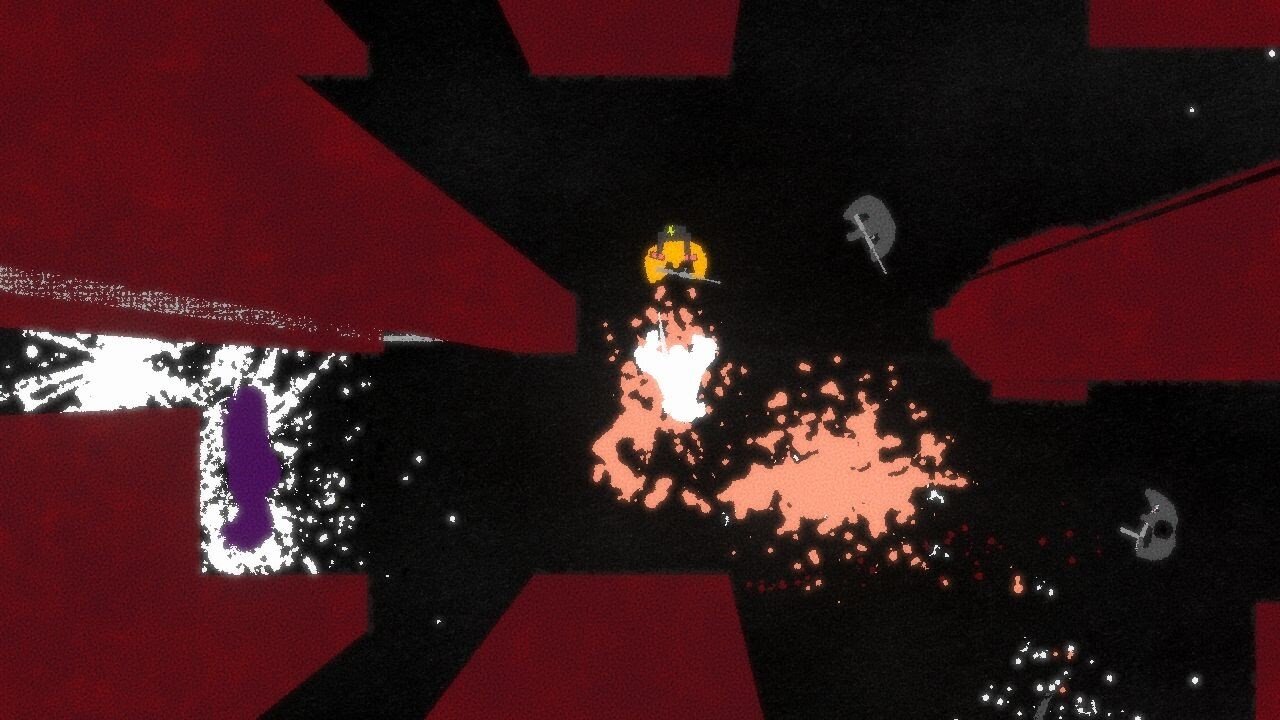How APE OUT Continues Jazz's Evolution in a New Digital Frontier
There is nothing quite as alienating as when someone I barely know asks me “what music do you like?”, and I respond with jazz. I am often met with vacant stares, small talk responses, or, in the worst possible scenario, asked if I like Kenny G (in this case, I typically throw myself through the nearest pane of glass to get away from them).
But jazz isn’t this intimidating quagmire that people, especially jazz musicians, have made it out to be. In fact, jazz is an incredibly broad umbrella term that consolidates a whole host of different kinds of music, from the biggest orchestral arrangements of those classic MGM musical theatre numbers right through to the silk dress-wearing diva serenading a smokey club. Jazz as a thematic tool can be evocative of a time, a place, and a mood and is an easy way of setting a scene, and it can be found even in the most modern of popular media—video games.
From the biggest titles to the smallest indies, developers have been using jazz as a soundtrack to elicit a response from players. Want to make your players feel like they’re watching classic Disney? Take a leap from Cuphead composer Kristofer Maddigan’s Cab Calloway inspired original songs. Want to evoke the feeling of a neo-noir detective mystery? Look no further than Peter McConnells’ fantastic Grim Fandango score, summoning that classic Count Basie big band sound. These are great games with excellent soundtracks, but there is an underbelly of jazz that is often avoided by other mediums: bop.
Bop can be defined by three distinct movements; bebop, hard-bop and post-bop. Bebop formed around the mid-40s as a direct response to the swing-heavy big band music popular in New York around the time (as exemplified in the aforementioned Grim Fandango). Bebop instead has a strong focus on virtuosic solos from giants like Charlie Parker, performed at blistering tempos. Hard-bop formed in the mid-50s both in response to bebop and the California “Cool-Jazz” movement made famous by bands such as The Dave Brubeck Quartet and their magnum opus, Take Five. Hard-bop incorporated musical phraseology from gospel and rhythm and blues, moving away from break-neck tempos in favor of increasingly complex harmonic structures made popular by titans like John Coltrane, Art Blakey, and Sonny Rollins. The last bop, post-bop, is the most avant-garde of the set. The sounds of Miles Davis’ (a genius who defined all 3 categories) effortlessly cool and free 1960s album Miles In The Sky took jazz to the very limits of expressive freedom. Bop is often described as “musicians jazz”—a close, intimate collection of players pushing themselves to the limit, with a sound that doesn’t communicate with a wider audience all too well.
“As the jazz gets more myopic and looks at itself more and looks at its own practice, the numbers of the audience start to decrease.” Paul Bartholomew, Lecturer of “Arranging and Techniques in Jazz” at Goldsmiths College in London told me. “Some of the more experimental or more difficult jazz linguistically, where you’re disappearing up the other end of a half whole diminished scale over a series of very difficult harmonies rather than a minor groove over a very hip and complex rhythm, can be alienating.”
It’s no wonder, then, that video games—a young, reactive media with an extremely wide audience—would avoid such introspective and difficult music. However, 2019’s APE OUT not only successfully implemented a bop soundtrack, but also fundamentally changed the relationship that music can have with video games.
“APE OUT started as a time-travelling stealth game, but that didn’t get very far.” Gabe Cuzzillo, one of the three New York-based APE OUT developers told me, much to my astonishment. “[There was] a lot of time spent exploring that space trying to figure out a way to make a top-down view birds-eye game have a sense of physicality to it, which is something I hadn’t seen in other top-down games particularly. I was [also] trying to come up with an aesthetic I could pull off myself as a non-artist.” Gabe found this aesthetic in a way familiar to anybody who has spent substantial time with jazz—through obsession.
“The aesthetic of the game kinda all coalesced around the song that is at the end of the game—“You’ve Got To Have Freedom” by Pharaoh Sanders because that was like a thing I was obsessed with at the time I was making the game. It struck me at a certain time in my life, and it was all I could think about for a while.”
Pharaoh Sanders
Pharaoh Sanders is an incredible post-bop Afrofuturist tenor saxophonist. His work with Coltrane, Davis, Sun Ra (the king of Afrofuturism), and Herbie Hancock in the 60s and 70s is the stuff of legend. The inspiration for Gabe, however, comes in the form of his 1980 hit You’ve Got To Have Freedom. The piece starts like it has already been going on for five minutes, with an electrifying piano solo from John Hicks held together with this incredibly swish and cool swing rhythm by drummer Idris Muhammed and walking bass from Ray Drummond. It immediately gives you the sensation of walking into a club mid-track and being blown away by the talents of the rhythm section. Sonically the piece is all hard-bop—very cool and playful over the 4-chord vamp, right up until Sanders blasts this almighty split harmonic motif. This acts as a metaphorical kick in the face to all your expectations for this track as suddenly this hip rhythm is met with a bolt of lightning. The piece goes on, featuring incredible performances from Eddie Henderson on flugelhorn and vocals from a group including a young and soon-to-be-legendary Bobby McFerrin. In a word, it is mesmerising, and a fitting piece to act as the muse for your game, but how could you possibly condense this unique energy into a soundtrack? For Gabe Cuzzillo, this started with the drums.
“Very early on, I wanted to have a dynamic jazz drum soundtrack for a couple of different reasons. I think partially I knew it would fit with the rest of the game, but one of the first sound design things I did in the game, not that any of it actually ended up in the game, was cymbal hits whenever you killed a guard. That immediately gave the game a unique feeling and character that was something that you could build the rest of the aesthetic out from.”
Gabe took the building blocks of jazz rhythm and used it as a tool to further explore the whole aesthetic of jazz. The entire game is a love letter to the genre—the blocky Blue Note album cover and 1950s movie-poster art style, the levels being called “albums”, right through to the cue dots and side changes within albums. Building out from the drums was a genius way for Gabe and his team to cement a clear, jazz identity for APE OUT. An identity that, as Paul Bartholomew told me, would not be feasible with a different genre of music.
“Jazz, for the case of APE OUT, is an incredibly useful rhythmic device, as you have this ape running, and you also have this up-tempo ride going. Is there an equivalent of that up-tempo groove in popular music? Even in other jazz variants, the whole image set and mood isn’t going to work with a bossa jazz groove or a jazz waltz. It’s the underlying rhythmic groove of the thing that is driving it.” Paul continued. “There’s an air of machismo about an incredibly fast rhythm, and it’s like, okay can we all keep up with this, and this taps into that feeling.”
The undercurrent of APE OUT, by and large, is incredibly quick. The constantly rumbling ride cymbal and shuffling on the snare give a very real sensation of perpetual movement. Though you are playing as an ape, the constant energy of the music makes you feel more like a shark as you have to keep moving otherwise you will die. The sound responds to this anxiety, ramping up as the action on the screen becomes more frantic and sitting back onto the beat in moments of respite. This level of craft goes beyond simple soundtracking and audio editing. It is an ecosystem built for a very specific purpose, as Gabe explained to me.
“There’s a virtual drummer and drum kit, with multiple drummers and kits for each album. Every drum sound you hear is one of many samples of one of the drums hit in a particular way. Each one has different stingers which are the cymbals that crash when you kill an enemy, and the game picks which particular stinger it plays depending on where on screen the guard dies and roughly where the stinger is on the virtual kit, because the drums are panned left and right based on the configuration of the kit. If you kill a guard in the same relative position on the screen, it will be the same cymbal that’s hit over and over again but different samples of hardness.”
This persistent drumming with punches of splash and rides, that Paul describes as “like Buddy Rich on speed” serves a purpose beyond simply being background music. It is the meter this whole game runs to. The ape isn’t just a character on the screen with a leitmotif that triggers around their movement; the ape is the bandleader. Paul tells me that when watching APE OUT footage “... it’s almost as if you have a mini score in front of you with the ape creating lots of blood, which essentially acts as big band hits. You can imagine an arrangement over the top of it so that as a score I can visualise.” Creating this level of reactiveness to the player is a feat that would not be possible if the sound designer, Matt Boch, didn’t have a wicked eye for programming as well as a deep understanding of jazz as a reactive artform.
“Part of why we were able to do it [incorporate a hard-bop sound] was because Matt is not only a fantastic musician but also a fantastic programmer and game designer all at the same time,” Gabe explained to me. “That allowed him to make a system that would be impossible to make if your composer isn’t someone who is also writing the system that allows the music to react to the game. That is just such a rare gift.”
What APE OUT represents is huge with respect to its source material and signifies an understanding that jazz isn’t a genre that can be taken for granted. Of all genres of music, jazz has some of the brightest of minds and sharpest of critics working in the field. If at any point, the game didn’t pay utmost respect to the genre, it might not be obvious to the average player, but the jazz connoisseur would soon notice. Paul emphasized that “this game has real integrity that is trying to be addressed with this very important music. So the last thing you want to do is have a game that is completely panned because it has some lame approach and doesn’t have any validity towards its musical form.” But, APE OUT wasn’t panned. APE OUT is adored for a menagerie of reasons, and Paul, a seasoned and obscenely talented mind and musician had one simple, but glowing comment about APE OUT: “The jazz isn’t safe.”
So, what does the future hold for this beloved genre of music? At this time, Gabe and his team are “working on a thing together right now, and no spoilers for what that is yet but there will be a special audio thing for that too.” Hopefully this will incorporate even more jazz iconography, but in the long term, APE OUT represents a lot more than a successful, highly-addictive game with amazing sound. It’s a sign that creative minds like Gabe are ready to embrace fringe aesthetics in their games. It’s a sign that audiences, who normally retreat when jazz gets too complex, are ready and willing to throw themselves into this cacophony of sound without feeling alienated. It’s another example of video games growing influence and maturity, that this is a game that does as much for jazz as jazz does for it. This is a sign that, as Paul eloquently puts it, “history has finally caught up with itself. It is saying that this is progressive music. It’s really exciting, it’s challenging, and it’s of the moment.”
Listening List - If you are interested in exploring jazz, both within and outside of video games, here is a listening list for you to dive straight into it!
Big band Swing:
Benny Goodman - Sing Sing Sing
Louis Prima - Capitol Collectors Series
Glenn Miller - Moonlight Serenade
Count Basie - April In Paris
Hard-Bop:
John Coltrane - Blue Train
Sonny Rollins - Saxophone Colossus
Eddie “lockjaw” Davis - Smokin’
Thelonious Monk - 5 By Monk By 5
Post-Bop:
Rasaan Roland Kirk - We Free Kings
Miles Davis - Miles In The Sky
Pharoah Sanders - Journey To The One
Kenny Garrett - Black Hope
Jazz in Video Games:
Cuphead - Kristofer Maddigan
Grim Fandango - P. McConnell
L.A. Noire - Andrew Hale
APE OUT - Matt Boch
Bebop:
Dizzy Gillespie - Shaw ‘Nuff
Charlie Parker - Cherokee
Bud Powell - Bouncing With Bud
D. Gordon - Dexter Rides Again
Cool Jazz:
Chet Baker - Chet Baker Sings
Dave Brubeck Quartet - Time Out
J. Christy - The Misty Miss Christy
G. Mulligan - Mainstream Of…
Reading List - Something that I haven’t spoken about in this article is that jazz is predominantly an African-American music. This is especially pertinent when focusing on Afrofuturists like Pharoah Sanders. Now, more than ever, we need to be educating ourselves on black history, so we can understand what has happened, what is happening now, and what we can do to make the world a better and fairer place. I implore you to read these amazing works by these fantastic people on the subject of race and music both within and outside of video games.
Malindy Hetfeld - Inherent Racism in VGM’s Underrepresentation of Black Musical Cultures
Ingrid Monson - Freedom Sounds: Civil Rights Call Out to Jazz and Africa
Gerald Horne - Jazz and Justice: Racism and the Political Economy of the Music
Ytasha L. Womack - Afrofuturism: The World of Black Sci-Fi and Fantasy Culture
Michael Leopold Weber
Michael is a freelance journalist currently living in West Japan. Though he has a degree in music from The University Of London, he still often plays out of time (shouting "it's close enough for jazz" whilst it happens). When he isn't obsessing over II-V-I's, Michael can be found digesting a whole range of video games from farming sims to FPSs. He also loves tea a little bit too much.




